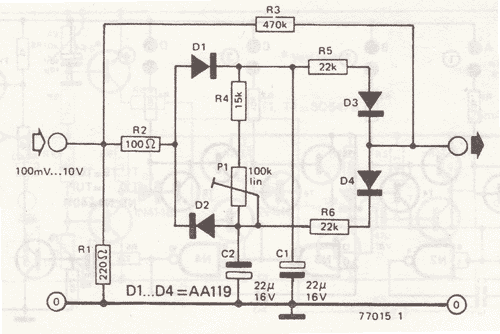I finally just realized why the value of C3 sitting near the diode bridge is the value it is.
I raised it to 22uF in my circuit thinking it wouldn't make much difference, initially thinking it was just to smooth out the negative feedback and Ts1 bias signal, but then, after changing it to be the same ratio (4.7:1) as it was in the original circuit, a wonderful thing started to happen.
The weird bias + the 10uF C3 capacitor, removes a LOT of the CV feed-through in that circuit in a very clever way.
I reduced C1, C2 to 10uF for a much faster attack time, which means that C3 I'll set to 2.2uF to get a close-ish ratio to the original (which used 47uF to 10uF).
What happens is that C3 and R13 and R14 form a low pass filter that smooths the compressed signal flowing through the emitter of Ts2, along with providing negative feedback via the input transformer to Ts1, that bias and negative feedback line also contains an inverted filtered signal, consisting mostly of the CV component of the signal, and hence due to the negative feedback, partially cancels it out of the signal path.
When I first found this I couldn't believe it, it's genius. This U274 circuit, even though it's basically just this one (with a few modifications):
is so subtly clever. Those Siemens Sitral guys were on the money for the parts count.
There is now almost no CV feed-through at all. Pretty cool stuff!
If you remove that capacitor entirely, there is no CV feed-through at all, but it comes at the cost of attack speed, which drops significantly.

















![Soldering Iron Kit, 120W LED Digital Advanced Solder Iron Soldering Gun kit, 110V Welding Tools, Smart Temperature Control [356℉-932℉], Extra 5pcs Tips, Auto Sleep, Temp Calibration, Orange](https://m.media-amazon.com/images/I/51sFKu9SdeL._SL500_.jpg)


















